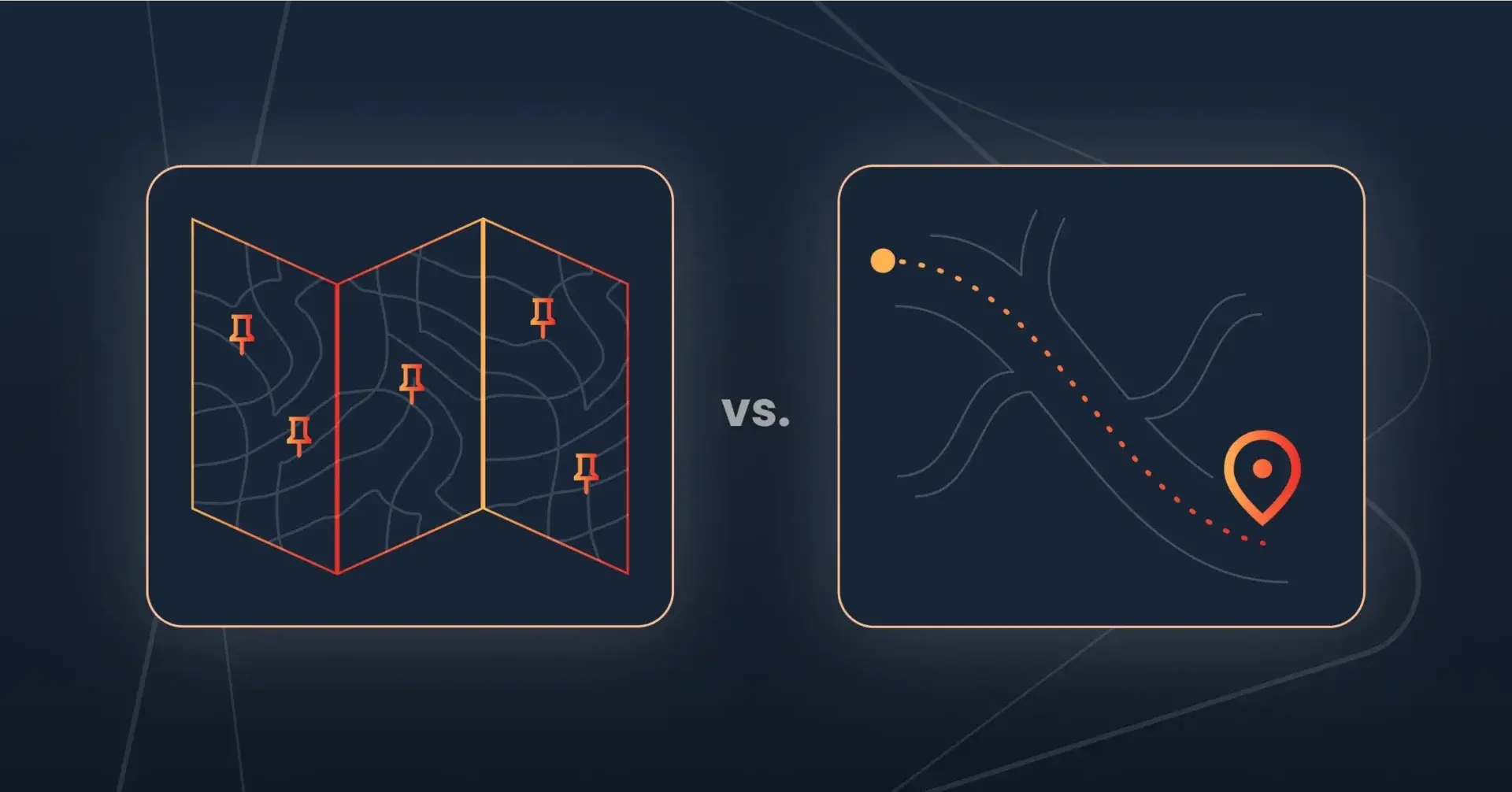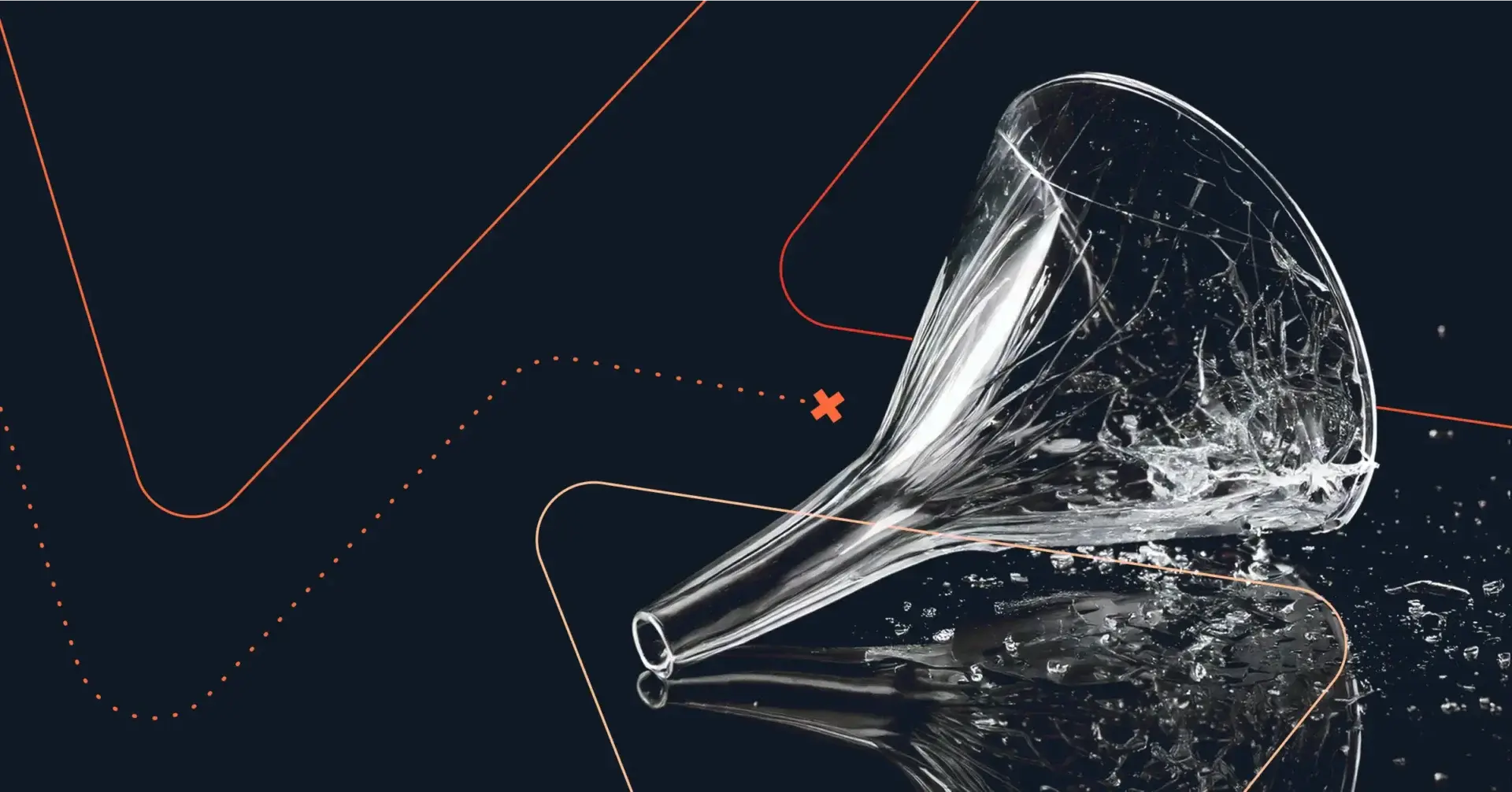
Rex Galbraith
CRO Consensus
Rex, CRO at Consensus, has selling in his blood. It only took closing his first deal for him to be ...
Close more deals with
Demo Automation.
Watch a Demo
The terms sales pipeline and sales funnel are commonplace in the business world. But what exactly separates the two? While both models are important to the sales process, they are not interchangeable — each provides key benefits that make them equally important to understand.
Using both of these models properly can elevate your sales strategy and offer your team a clearer picture of their performance.
The sales funnel is a visual representation of a customer’s journey in relation to your brand. Typically following the “AIDA” model, sales funnels break the customer journey down into four steps:
- Attention: Buyers have engaged in their first interaction with your company. However, they have not yet become prospects.
- Interest: Buyers begin to do more research into your product offering and company. They may request a demo based on interest level.
- Desire: Buyers want to purchase your product. However, they are deciding whether or not to buy.
- Action: Buyers are ready to close the deal and have initiated a transaction.
As qualified leads pass through the funnel, they are sorted into the appropriate segments, each with their own unique needs. The closer to the bottom of the funnel they get, the more likely they are to convert. Sales teams use this model to track buyer progress and nurture leads to reach conversion.
What is a Sales Pipeline?
Your sales pipeline is a linear model that shows how your team progresses from lead generation to close. This model is typically broken down into a handful of key stages, including:
- Lead generation: Attracting potential buyers to your company.
- Prospect qualification: Filtering out leads that are unlikely to convert and prioritizing those most likely to close.
- Sales meeting/call: Interacting with prospects to inform them about your product offerings and answer any questions.
- Proposal sent: Creating a tailored proposal that suits buyer issues and sending it over for review. May lead to further negotiations.
- Deal closure: Signing an agreement to close the sale and confirm the purchase.
Sales often use this model to organize their accounts, forecast potential revenue, and determine which actions are required of them at any point in the sales process.
Key Differences Between the Sales Pipeline vs Sales Funnel
Although both models are used to visualize elements of your sales strategy, they have different purposes and features that make them each uniquely beneficial. Understanding these differences can help you optimize your utilization.
Perspective
One of the main differences between these two sales models is that one is customer-focused, while the other is centered around your sales team. The sales pipeline is an internal-facing model that tracks the sales process from your team’s perspective — from lead generation to closing. The sales funnel is outward-facing. It tracks the customer journey from the buyer’s perspective — from awareness to action.
Visualization
A distinct feature of the sales funnel is its inverted conical shape. The reason why the sales funnel is shaped this way is because, as your overall leads go through each phase of the funnel, there will be fewer and fewer who make it to the end. Each phase will have a certain level of drop-off until those that are ready to buy remain. Alternatively, the sales pipeline is a linear depiction of a process, with clear stages that represent the progression of a deal.
Stages
Each of these models is broken down into several stages. However, what these stages represent are very different. In the sales funnel, stages are broken down based on buyer behavior and attitude. As customers move from attention to action, the stages describe how their mental perspective evolves over the course of a purchasing decision.
The sales pipeline is broken down by action-based stages. Each stage represents a piece of the sales process puzzle. As a lead moves through the pipeline, these stages are used to prompt actions from your sales team rather than describe your customers.
Reporting
The data your team gains from each of these models provides separate, but equally important, insights into your sales process. Understanding these insights can help you optimize both your sales pipeline and sales funnel.
Sales pipeline reporting offers data on:
- Effectiveness of sales activities: Tracks how efficiently your team is executing key sales activities, such as prospecting, follow-ups, and negotiations. This data helps you identify which actions are driving deals forward and which may need refinement.
- Deal progression: Measures the number of deals advancing through each stage of the pipeline, offering visibility into your sales team’s ability to move prospects from one stage to the next. This can highlight strengths in certain stages and potential bottlenecks in others.
- Deal attrition points: Pinpoints where deals are dropping out of the pipeline, providing clues about where prospects are losing interest or facing obstacles. Understanding these drop-off points allows you to address specific issues, such as pricing concerns, product misunderstandings, or sales objections.
- Sales forecasting: Provides a clear view of potential future revenue based on the deals currently in the pipeline. Accurate forecasting enables better resource allocation, goal setting, and decision-making at both strategic and operational levels.
- Team performance: Offers insights into individual and team performance, allowing you to identify top performers and those who may need additional support or training. This can also help in setting more realistic sales targets and quotas.
Sales funnel reporting offers data on:
- Conversion rates: Analyzes the percentage of leads that move from one stage of the funnel to the next. Understanding conversion rates at each stage helps identify where your marketing and sales efforts are most effective and where improvements are needed.
- Lead qualification: Provides data on the quality of leads entering the funnel, helping you assess how well your lead generation and qualification processes are working. This can lead to adjustments in targeting criteria, messaging, or lead scoring.
- Buyer nurturing: Evaluates the effectiveness of your nurturing efforts, tracking how well leads are being guided through the funnel. This data can inform the development of more personalized and timely follow-ups, content, and engagement strategies to keep prospects moving forward.
- Marketing and sales alignment: Highlights how well marketing and sales teams are working together to drive leads through the funnel. Misalignments can be identified and corrected to ensure a seamless experience for the buyer and higher conversion rates.
- Customer behavior insights: Offers a deeper understanding of buyer behavior, including how prospects interact with your content, respond to offers, and make decisions. These insights can be used to refine your messaging, content strategy, and overall approach to better meet buyer needs and expectations.
If you’re disproportionately losing leads at the top of your funnel, your team may be bringing in a high volume of unqualified leads. If you’re losing leads in the middle of your funnel, your team may not be effectively nurturing your buyer relationships. If you’re losing leads right before conversion, your team may need training on how to seal the deal.
Elevate Your Sales Expertise with Consensus
Mastering the nuances of terms like sales funnel and sales pipeline is just the beginning. Dive into our blog for cutting-edge insights, strategies, and tips that will empower you to close more deals, optimize your process, and outshine the competition.




